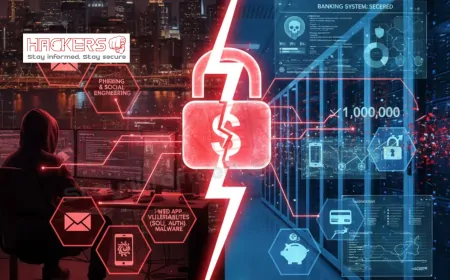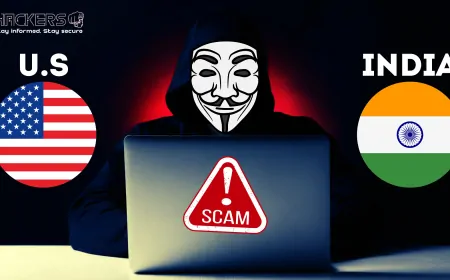Why Have Indian Banks Reported 248 Data Breaches in 4 Years?
Imagine waking up to a notification that your bank account details have been stolen. Your hard-earned money, personal information, and financial privacy are suddenly at risk. This is not a scene from a thriller movie. It is a harsh reality for millions of Indians. Between 2020 and 2024, Indian banks reported a shocking 248 data breaches, according to official data shared in Parliament. That averages to more than one breach every week. But why is this happening in one of the world’s fastest-growing digital economies? In this blog, we break down the reasons in simple terms, explore the impact, and discuss what can be done to stop it. Whether you are a regular bank customer or just curious about digital safety, this post is for you.

Table of Contents
- The Scale of the Problem
- Major Causes Behind the Breaches
- Year-Wise Breakdown of Breaches
- Types of Data Compromised
- Impact on Customers and Banks
- What Banks Are Doing Wrong
- Role of Outdated Technology
- Human Error: The Weakest Link
- Cybercriminals Targeting India
- Regulatory Gaps and Enforcement Issues
- Comparison with Global Standards
- Steps Banks Can Take to Improve
- Conclusion: A Wake-Up Call for Digital India
The Scale of the Problem
India’s banking sector has embraced digital transformation at lightning speed. From UPI payments to mobile banking apps, convenience is at an all-time high. But with great convenience comes great risk. The Reserve Bank of India (RBI) and the government have confirmed that 248 data breaches occurred in scheduled commercial banks over four years. These are not minor glitches. They involve sensitive customer data like names, phone numbers, addresses, account numbers, and even Aadhaar details. Each breach potentially affects thousands, if not millions, of people.
Major Causes Behind the Breaches
Data breaches do not happen by accident. They result from a mix of technical weaknesses, human mistakes, and clever attacks by cybercriminals. Let us look at the top reasons:
- Weak cybersecurity systems in some banks
- Outdated software that hackers can easily exploit
- Phishing attacks tricking employees into revealing passwords
- Insider threats from dishonest staff
- Lack of regular security audits
- Poorly secured third-party vendors
Year-Wise Breakdown of Breaches
To understand the trend, here is a clear table showing how breaches increased over the years:
| Year | Number of Breaches | Key Observations |
|---|---|---|
| 2020 | 44 | Pandemic accelerated online banking; many systems were unprepared |
| 2021 | 56 | Rise in phishing due to remote work |
| 2022 | 64 | Third-party vendor breaches became common |
| 2023 | 84 | Highest jump; ransomware attacks spiked |
The numbers show a steady rise. Each year, hackers found new ways to break in.
Types of Data Compromised
Not all breaches are the same. Some steal login credentials, while others grab personal identity documents. Common data types exposed include:
- Customer names and phone numbers
- Bank account and card details
- Aadhaar and PAN numbers
- Transaction history
- Email addresses and passwords
Once hackers have this information, they can commit identity theft, drain accounts, or sell the data on the dark web.
Impact on Customers and Banks
For customers, a breach means stress, financial loss, and long hours fixing fraud. Many victims face unauthorized transactions before they even notice. Banks suffer too. They lose customer trust, pay heavy fines, and spend millions on damage control. In 2023, one major breach cost a public sector bank over ₹50 crore in remediation.
What Banks Are Doing Wrong
Despite warnings, many banks repeat the same mistakes:
- Ignoring RBI cybersecurity guidelines
- Delaying software updates
- Skipping employee training on phishing
- Trusting third-party vendors without checks
Small cooperative banks are especially vulnerable because they lack funds for strong security.
Role of Outdated Technology
Many banks still run on legacy systems built decades ago. These old platforms cannot handle modern threats. For example, some use software without multi-factor authentication (MFA), which means a simple password guess can grant access. Upgrading costs money, but the price of a breach is much higher.
Human Error: The Weakest Link
Technology is only as strong as the people using it. Employees often click suspicious links or share passwords. In one case, a bank manager fell for a fake email and installed malware. Regular training and strict policies can reduce such risks.
Cybercriminals Targeting India
India’s large population and growing digital payments make it a goldmine for hackers. Groups from Russia, Nigeria, and even within India launch sophisticated attacks. They use ransomware (locking data until payment) and phishing kits bought cheaply online.
Regulatory Gaps and Enforcement Issues
The RBI has rules, but enforcement is weak. Many banks report breaches only after media exposure. Fines are rare and small compared to the damage. A stronger regulator with real-time monitoring could change the game.
Comparison with Global Standards
Countries like Singapore and the UK report fewer breaches per bank. They mandate:
- Zero-trust architecture (verify every access)
- Real-time threat detection
- Mandatory breach disclosure within 72 hours
India can learn from these models without reinventing the wheel.
Steps Banks Can Take to Improve
Prevention is cheaper than cure. Banks should:
- Invest in AI-powered security tools
- Conduct monthly penetration testing
- Train staff with real-life simulations
- Encrypt all customer data at rest and in transit
- Partner only with certified vendors
Conclusion: A Wake-Up Call for Digital India
The 248 data breaches in four years are not just numbers. They represent broken trust and real harm to millions. Rapid digitization brought convenience, but banks rushed without building strong defenses. Outdated systems, careless employees, and weak regulations created perfect openings for cybercriminals. The good news? Solutions exist. With better technology, stricter rules, and awareness, Indian banks can protect customers and restore faith. Every stakeholder: banks, regulators, and users: must act now. Secure banking is not a luxury. It is a necessity in Digital India.
What does the number 248 represent?
It is the total number of data breaches reported by scheduled commercial banks in India from 2020 to 2023, as per government data.
Are private banks safer than public banks?
No clear winner. Both have faced breaches. Private banks invest more in tech, but public banks handle larger volumes, making them bigger targets.
Can customers prevent breaches?
Customers cannot stop bank-side breaches, but they can use strong passwords, enable alerts, and avoid sharing OTPs.
What is phishing?
Phishing is a trick where hackers send fake emails or messages to steal login details. It looks real but leads to fraud.
Why do breaches keep increasing every year?
More online transactions, sophisticated hacker tools, and slow adoption of security upgrades drive the rise.
Has any bank been fined heavily for breaches?
Yes, RBI has fined several banks, but amounts are often under ₹5 crore, which critics say is too low.
What is ransomware?
Ransomware is malware that locks files or systems. Hackers demand payment (usually in cryptocurrency) to unlock them.
Do small banks face more breaches?
Yes, cooperative and regional banks often lack budget and expertise, making them easier targets.
Is my Aadhaar number safe with banks?
Banks are required to mask Aadhaar, but breaches have exposed full numbers in the past. Use virtual IDs when possible.
What is multi-factor authentication (MFA)?
MFA requires two or more proofs (password + OTP) to log in. It adds a strong layer of security.
Why do third-party vendors cause breaches?
Banks outsource services like payment gateways. If the vendor’s system is weak, hackers enter through the back door.
Can the government stop all breaches?
No one can stop all attacks, but stricter laws and monitoring can reduce them significantly.
What is the dark web?
The dark web is a hidden part of the internet where stolen data is bought and sold anonymously.
Should I stop using net banking?
No. Net banking is safe if you follow precautions and your bank has strong security.
What is encryption?
Encryption scrambles data so only authorized people can read it. Banks must encrypt sensitive information.
How soon must banks report a breach?
RBI guidelines say within 6 hours of detection, but many delay or under-report.
Are UPI apps also at risk?
Yes, UPI platforms have faced attacks, though most breaches occur at the bank level.
What is a penetration test?
It is a simulated cyberattack to find weak spots before real hackers do.
Can AI help stop breaches?
Yes, AI can detect unusual patterns in real time and block threats faster than humans.
What should I do if my data is breached?
Change passwords, inform your bank, monitor accounts, and file a police complaint if fraud occurs.
What's Your Reaction?






















































